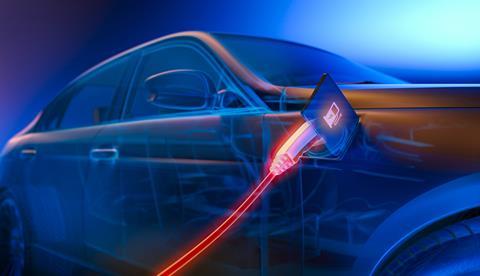As more organisations switch to electric fleets, risk managers need to be aware of the dangers these battery-powered vehicles bring
There is no doubt that companies and organisations are increasingly adopting electric vehicles - from forklift trucks through to cars, buses, dustcarts and more – often as part of wider sustainability drives.
And whilst this is good news for those looking to reduce their carbon footprints, and demonstrate their green and ESG credentials, there are some serious health and safety issues that risk managers need to take on board to protect their people and their property.
The one key danger is clearly the risk of fire. In short, if you break open, overcharge, damage or hit a lithium-ion battery it can easily catch fire or explode. All by itself. While such fires remain rare, for now, when they do occur, they can be extremely dangerous.
During an electric vehicle fire, over 100 organic chemicals are generated, including some incredibly toxic gases such as carbon monoxide and hydrogen cyanide – both of which are fatal to humans.

Thermal runaway
Electric Vehicle (EV) batteries are made up of the equivalent of thousands of mobile phone batteries in one place, all linked together. If one of these go up, it can quickly transfer to the next one and so on. It feeds itself.
Around 150,000 EVs have already been recalled by manufacturers because of a history of fires being caused by the charging process. Many of these are still current and recalls continue, even amongst the major manufacturers.
And as battery density advances, so too does the potential for a serious incident as a lot more energy is held in the battery.
Crucially, nearly all incidents happen when a battery is charging as a result of thermal runaway, which can lead to ignition, or even explosion.
The power of these fires is underlined by work that has been undergoing in Denmark, where they have developed one of the few things that can actually extinguish a lithium-ion car fire.
It is in essence a huge freight container filled with distilled water. You drop the vehicle which is on fire into it and leave it there.
A question of charging
Risk managers need to consider a number of safety factors when considering EVs as part of their fleets, whether cars, SUVs, HGVs or even forklifts that are increasingly being adopted by fulfilment warehouses.
The biggest quandary is where to charge the vehicles. Many store vehicles in their existing underground car park for example, but as you are not allowed to refill a petrol tank in an underground car park, an EV should not really be treated differently.
It is essential to identify how to ensure that electric charging apparatus and vehicles are segregated from the physical premises and avoid the danger of a battery igniting underneath the building or right next to it.
The fixed electrical system also has to be upgraded to be able to provide enough power for one or more electric vehicles charging, especially if it is a fast charger, which feed a lot more power through a lot more quickly.
This will also entail getting a new IEE fixed electrical testing certificate to provide evidence of compliance with the Electricity at Work Regulations 1989.
Solar complexity
The use of solar panels to generate electricity to charge fleets is also becoming increasingly common, but again this brings hidden challenges.
Insurers will want to know if, for example, the roof is strong enough to bear their weight, what measures have been put in place to ensure the panels remain secure in the event of a storm, and if guards have been fitted to stop pigeons and rats getting underneath and gnawing away at vulnerable cables.
Some businesses will also look to install additional lithium-ion batteries to store energy to run the business and these also carry vast amounts of pent-up energy.
Switching to EVs also entails a widespread education programme across the organisation, to ensure drivers, operators and managers are educated on the dangers and the importance of following a safe procedure when charging.
This includes ensuring any damage – such as from reversing into a charging post – is reported – supported by the introduction of a regular inspection and testing regime, and maintenance programme.
Environmental liability concerns
Insurers are also likely, or should, insist that any fire risk assessment is fully reviewed, preferably through a professionally accredited fire risk assessor, and they may insist that you have a DSEAR (Dangerous Substances and Explosive Atmospheres Regulations) assessment as well. These are quite specialist but highly recommended.
And should the worst happen, and a fire does breakout, consideration needs to have been made as to how it will be dealt with – and how other vehicles (that could also alight, and quickly), will be segregated.
This is a key issue, as there is a danger that if the fire brigade attends and pour thousands of litres of water per minute on a fired EV vehicle as it may wash the corrosive pollutants into the ground, contaminating it.
There is no question that from an ESG perspective, the adoption of green fleets brings many benefits. However, as with any new and rapidly evolving technology, there is a need to ensure the switch is fully thought-through and appropriate health and safety measures put in place.
Simon Cutmore is director Risk Management, Verlingue UK




















No comments yet